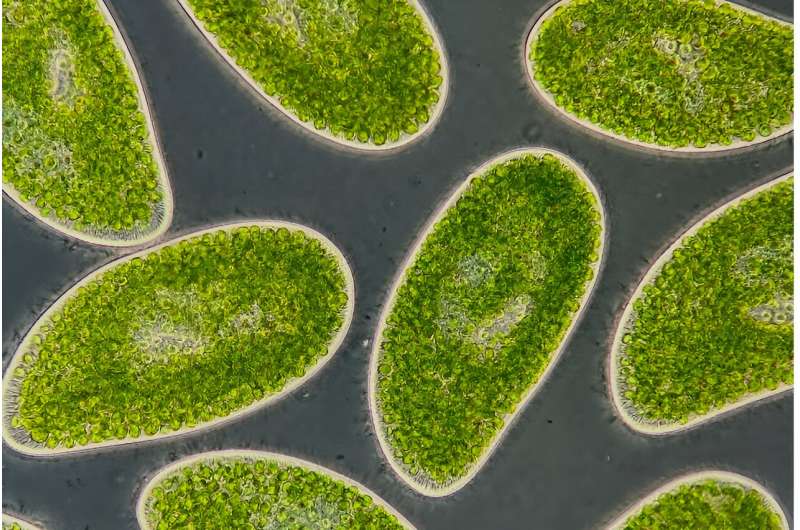Study reveals how climate change impacts the invisible food chain in peatlands

March 18, 2024
This article underwent scrutiny in accordance to Science X's editorial procedures and policies to ensure the credibility of the content. A few attributes were given prominence during the process:
- fact-checked
- peer-reviewed publication
- trusted source
- proofread
The credit goes to Duke University
Peat bogs may seem mundane with their brown, wet surfaces, but they possess an extraordinary ability to combat climate change.
Peatlands, despite covering only 3% of the earth, have been absorbing and containing carbon dioxide for thousands of years, contributing significantly to carbon storage. They hold twice as much carbon as all the forests of the world combined.
The impact of climate change on the future of this important carbon sink is uncertain. A recent study indicates that tiny organisms, which are usually ignored, might have a part to play in it.
Carbon in peatlands resides mainly in the moss layers, both living and dead, due to cold, waterlogged, and oxygen-poor conditions. This prevents plants from decomposing and allows the carbon they have absorbed during photosynthesis to remain locked in the soil, preventing it from escaping into the atmosphere.
Rising global temperatures are drying out peatlands, transforming them from carbon sinks into potential carbon sources.
A study published on March 3 in the Global Change Biology journal led by Duke biology professor Jean Philippe Gibert and doctoral student Christopher Kilner discussed the impact of climate change on protists, small organisms living in peatland mosses.
The collective weight of the abundant protists is double the total weight of all the animals in the world. Their behavior and life processes have implications for the carbon exchange between peatlands and the atmosphere, simply because their life processes involve the intake and release of carbon.
Some protists use CO2 for growth while others prey on nitrogen-fixing bacteria essential for peatland moss health.
In a Minnesota northern bog, researchers from Oak Ridge National Laboratory designed a 40-feet open-topped enclosure to simulate different global warming scenarios, with control temperatures ranging from no warming to temperatures 9 degrees Celsius higher than the surrounding peatland.
The Duke team started observing unforeseen changes, five years after the experiment. 'The protists started behaving in ways that we didn't expect,' Kilner stated.
Under current CO2 levels, most of the over 200,000 protists increased in number with warming. However, the situation changed with elevated CO2 levels.
The intertwined effects of warming and elevated CO2 cause changes in protists’ feeding habits and other traits affecting their CO2 emissions during respiration, indicating their contribution to climate change.
The significance of these changes concerning peatlands' future capabilities in mitigating climate change is uncertain but most likely key.
The findings highlight that the typically overlooked segment of the peatlands' microbial food web also responds to climate change and in ways that are 'currently not accounted for in models that predict future warming,' Gibert claims.
Supplementary information: Christopher L. Kilner et al, Temperature and CO2 interactively drive shifts in the compositional and functional structure of peatland protist communities, Global Change Biology (2024).
Journal details: Global Change Biology
Courtesy of Duke University




